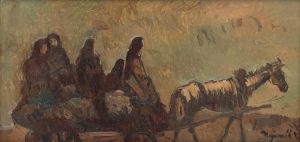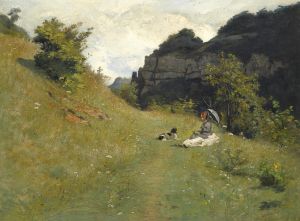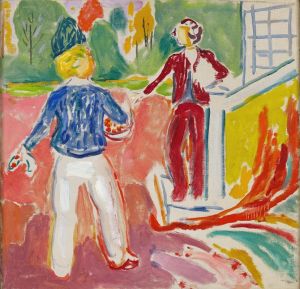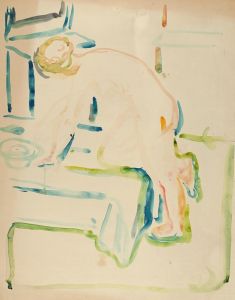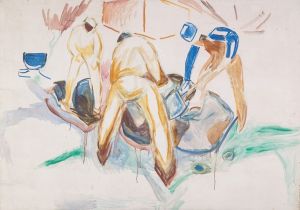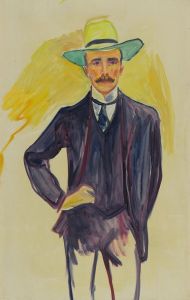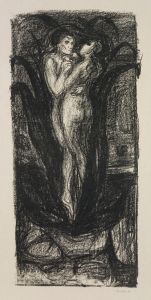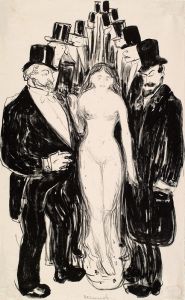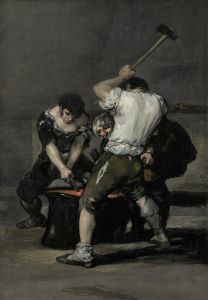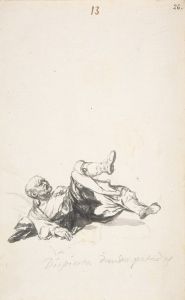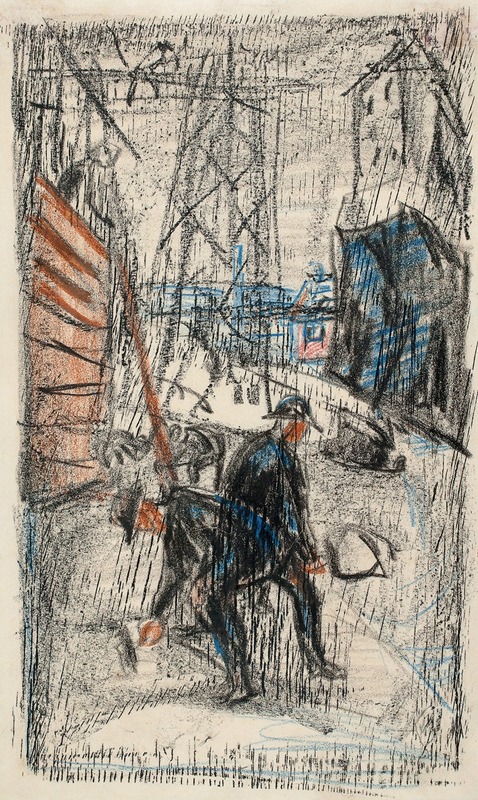
Arbeidere i gate
A hand-painted replica of Edvard Munch’s masterpiece Arbeidere i gate, meticulously crafted by professional artists to capture the true essence of the original. Each piece is created with museum-quality canvas and rare mineral pigments, carefully painted by experienced artists with delicate brushstrokes and rich, layered colors to perfectly recreate the texture of the original artwork. Unlike machine-printed reproductions, this hand-painted version brings the painting to life, infused with the artist’s emotions and skill in every stroke. Whether for personal collection or home decoration, it instantly elevates the artistic atmosphere of any space.
Edvard Munch, a Norwegian painter and printmaker, is renowned for his significant contribution to the Symbolist movement in the late 19th and early 20th centuries. He is best known for his iconic work "The Scream," but his oeuvre includes a wide range of subjects and styles. One of his lesser-known works is "Arbeidere i gate," which translates to "Workers on Their Way Home." This painting is part of Munch's exploration of social themes and the human condition, reflecting his interest in the lives of ordinary people.
"Arbeidere i gate" was created during a period when Munch was deeply engaged with the social and political changes occurring in Europe. The painting depicts a group of workers walking along a street, presumably after a long day of labor. This subject matter aligns with Munch's interest in the struggles and experiences of the working class, a theme that was gaining prominence in art and literature at the time due to the rise of industrialization and urbanization.
The composition of "Arbeidere i gate" is notable for its use of perspective and color to convey the mood and atmosphere of the scene. Munch employs a somewhat somber palette, using muted tones to reflect the weariness and monotony of the workers' daily routine. The figures are depicted with a sense of movement, suggesting their collective journey and shared experience. Munch's brushwork is expressive, capturing the emotional weight of the scene without delving into overt sentimentality.
Munch's interest in the human psyche and emotional experience is evident in "Arbeidere i gate." The painting can be seen as a commentary on the alienation and anonymity faced by individuals within the rapidly changing urban environment. The workers are portrayed as a unified group, yet their individual identities are obscured, highlighting the tension between community and individuality in modern society.
This work is part of Munch's broader exploration of existential themes, which he pursued throughout his career. His art often grapples with ideas of anxiety, love, death, and the passage of time, reflecting his belief that art should delve into the depths of human experience. "Arbeidere i gate" fits within this framework, offering a poignant glimpse into the lives of those who form the backbone of society yet often remain unseen and uncelebrated.
Munch's influence on modern art is profound, with his work paving the way for Expressionism and impacting numerous artists who followed. While "Arbeidere i gate" may not be as widely recognized as some of his other pieces, it remains an important part of his artistic legacy, illustrating his commitment to portraying the realities of human life with empathy and insight.
In summary, "Arbeidere i gate" by Edvard Munch is a significant work that captures the essence of the working class during a time of great social change. Through his use of color, composition, and subject matter, Munch provides a window into the emotional and existential dimensions of everyday life, solidifying his place as a pivotal figure in the history of modern art.






